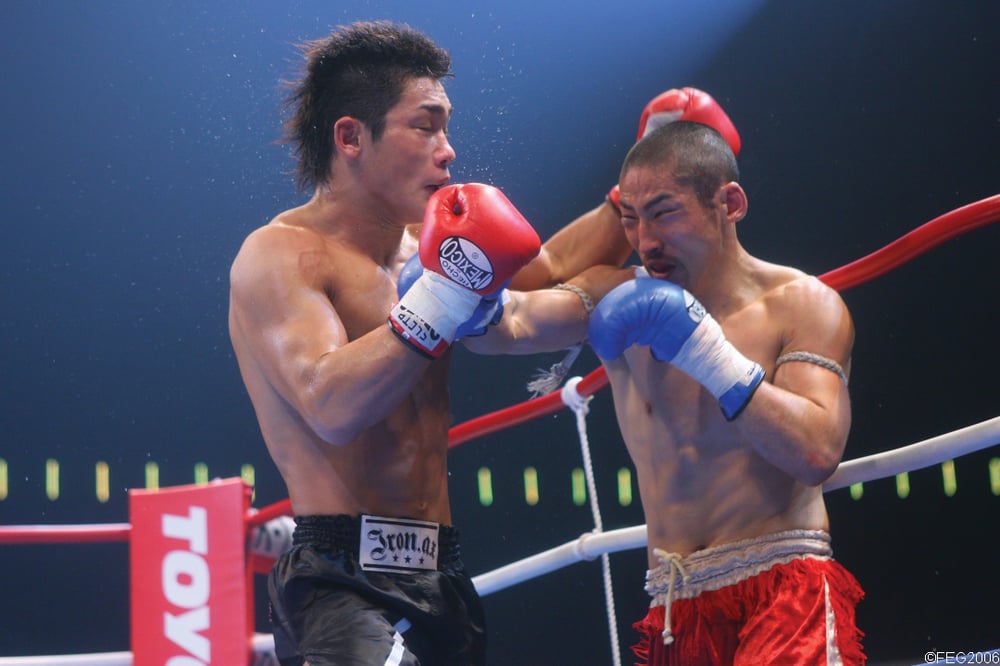
Issue 017
September 2006
By Dr Rosi Sexton PhD
According to Mark Twain “Most people use statistics the way a drunkard uses a lamppost, more for support than illumination”. That certainly seems to be the case when it comes to arguments about the safety of mixed martial arts, a subject that arouses strong emotions on all sides of the debate. Thanks to a recent study, the subject has been in the news lately and has stirred up a political storm in MMA circles.
Back in March of this year, Reuters reported “No-holds-barred combat deals a knockout blow to fighters’ brains”. The news service claimed:
“… the new study, published in the British Journal of Sports Medicine, suggests that mixed martial arts fighting poses a greater risk of concussion [than boxing].
In a review of 642 televised matches, Dr George J. Buse… found that 28 per cent [of fights] were stopped because a fighter suffered a head impact that left him disorientated or unresponsive.
That proportion is much higher than has been documented in other combat sports, including boxing and kickboxing, according to Buse”
Opponents of MMA seized on the report in a flash. In the US, Bill O’Reilly mentioned it on his show in a debate with UFC president Dana White, claiming “The British Journal of Sports Medicine suggests that your sport is three times as dangerous as prize fighting.”
Meanwhile the MMA community rallied round. Internet forums buzzed with righteous indignation. ‘MMABlogger’ wrote, “I have no idea how this got into the BJSM. I mean, aren’t scientific journals supposed to be peer reviewed to screen out any sort of junk?” Other comments were rather less polite.
While the storm was busy brewing, I decided that in order to get to the bottom of this particular teacup I was going to have to do some digging. So I sat down with a very strong mug of coffee and actually read the study.

Unlike the media attention, the study itself is written in a very measured tone. Beginning with an introduction that describes MMA as a sport with its roots in Ancient Greece, Buse goes on to set out his objectives and methods and to present his meticulously collected data. I was struggling to see what all the fuss was about, until I reached the final section of the article. It is here that the controversial comparison with boxing and kickboxing is to be found; the piece that seems to have caught everyone’s attention.
The paper states that in studies of boxing and kickboxing matches, 8.8% and 7.7% respectively were stopped because of head trauma, concussion or KO. This is a much lower proportion than his 28.3% for MMA.
Like many other mixed martial artists, I was unconvinced by this comparison. So I took the next step of emailing the study’s author.
I found George Buse eager to discuss his work, which he is clearly passionate about. He was keen to be interviewed and put across his side of the story. I sensed an underlying frustration with the way his study has been reported and interpreted, and with the way he has been portrayed.
“A well-known news service that summarized my study results also fuelled the negative fire and brandished my study and me as anti-MMA,” he wrote. “This was not the intent of my study, I am not anti-MMA… I actually have a great deal of respect for the majority of MMA competitors. I used to compete in amateur Muay Thai, and served as a ringside physician for numerous MMA and kickboxing matches, so I’m aware of the sacrifices and fortitude it takes to ‘get in there’”.
It was his experiences as a ringside physician that inspired him to research the risks involved in MMA. He describes an incident where a close friend of his was knocked out in an MMA match. “Although he regained consciousness within 30 seconds, to this day he is unable to recall the hours before competing, while competing, and the hour following the knockout. He has also suffered from debilitating headaches and sporadic vision changes ever since.” He also describes the experience of tending to competitors who have been KOd and taken some time to regain consciousness. “For anyone who has to care directly for such an unresponsive individual, it can be unpleasant ensuring airway and breathing remain intact, while considering possible cervical spine injury or bleeding in the brain. Even after a knocked out competitor regains consciousness and appears to be well from a medical standpoint, life-threatening swelling of the brain can occur hours after the competitor is released from my care – and I could still be held liable if that person had an adverse outcome.”
So what does this new study actually tell us? Buse is adamant that the purpose of his study was not to compare the dangers of MMA and boxing. He explains that his objectives were to identify the medical issues of most concern in MMA, in order to help focus future research efforts. He openly acknowledges the limitations of his work. “My study was objective only insofar as to report MMA match outcomes; it revealed nothing about the severity of injury associated with those outcomes.” He adds “Only through more detailed research of brain function and/or structure would we be able to reveal the actual risks of brain injury associated with MMA. Until such research is completed, claiming that MMA is safer or more dangerous than boxing or kickboxing is unsubstantiated from a medical standpoint”.

So, we now know that head injury may be a relevant medical issue in MMA, although as yet we don’t know exactly how much of a danger it is. Does this really tell us anything we didn’t already know? Surely this isn’t exactly earth shattering news? I put this to Buse, and asked him about his study’s relevance.
“My study was the first to systematically review MMA outcomes. Just as MMA evolved from a relatively unregulated spectacle to a sport accepted by athletic governing commissions, consideration of the sport’s medical risks needs to evolve from subjective beliefs to objective research findings. In that sense, my work is a stepping-stone along the path towards objectivity. Based on the number of matches stopped due to head impact, additional study in that area is warranted.”
To see why this is important, consider how medical research operates. Detailed studies can be pricey, and in order to justify the investment and obtain funding, it is extremely helpful to have published a pilot study that shows specifically where further research is needed and why it is important.
This brought us to the crucial question “What’s in it for us?”. How could I, as an MMA fighter and fan of the sport, benefit from all this research? The MMA community has become understandably suspicious of anything which anti-MMA politicians or lobbyists could potentially use to discredit the sport.
Buse pointed out that neuropsychological studies conducted in amateur boxing have shown the risks of long-term brain damage were negligible (unfortunately the same cannot be said of professional boxing). He feels that similar research in MMA would give us a better picture of the true risks involved.
“If tests revealed that MMA is strongly associated with irreversible brain damage, then changes should be made to better protect the athletes. If research revealed that MMA poses no significantly increased risk of serious or permanent injury, then perhaps the sport would be more tolerable from medical and political perspectives. Regardless, the MMA community has an opportunity to set the precedent in safety for combat sports and silence many critics.” He sees it as an opportunity to improve the safety of the sport, rather than an excuse to
ban it.
“If MMA organisations and competitors would accept neuropsychological testing, I feel we could determine the actual risks of MMA training and competition with validity. The essence of such research would be to… track each competitor over time to see whether there are any significant or permanent changes in brain function. Think of neuropsychological testing as a more sensitive pre- and post- fight physical that aims to identify functional brain damage.”

The idea would be to warn competitors if they were showing signs of long-term damage, and potentially limit their participation if that was
considered necessary for their own safety. Buse is careful to point out that even if a competitor were found to have signs of progressive brain damage, he wouldn’t necessarily have to be stopped from competing altogether, but could potentially continue to compete in a more limited rules format (for example restricting slams or strikes to the head).
Finally, we got round to the controversial comparison with boxing that had stirred up all the fuss. We discussed the possible reasons for the discrepancy between KO and TKO rates in boxing and MMA. He agreed that if he’d had more space in the journal, he would have liked to include a more balanced discussion of the rule differences, and pointed out that comparing MMA with boxing is really like comparing apples with oranges. It is unfortunate that it is this comparison that has been seized on by the media. As so commonly happens in MMA, the press have chosen to create a drama rather than focus on the real message and importance of the work.
Overall, I am reminded that we shouldn’t become blasé about the risks involved in what we do. In the battle to gain acceptance as a sport, and to justify ourselves to our critics we sometimes forget that there is still very little objective information out there to back up our claims of safety. Burying our heads in the sand and repeating the same old lines about being “safer than boxing” may or may not convince the reporters and politicians, but it doesn’t help the sport to progress in the long term. If, as most of us believe, MMA is a comparatively safe sport, then having concrete evidence of this would do our case a world of good. Where there are risks, we can only benefit from knowing what those are and having a strategy in place to manage them as best we can.
I firmly believe that we should be free to choose the risks we take. I don’t think it is up to politicians or doctors to determine whether our sport is acceptable. At the same time, in order to make informed choices about those risks, we need to have objective information on which to base those choices. This is where researchers like Dr Buse can do us a valuable service. We should know better by now than to believe the media hype.










